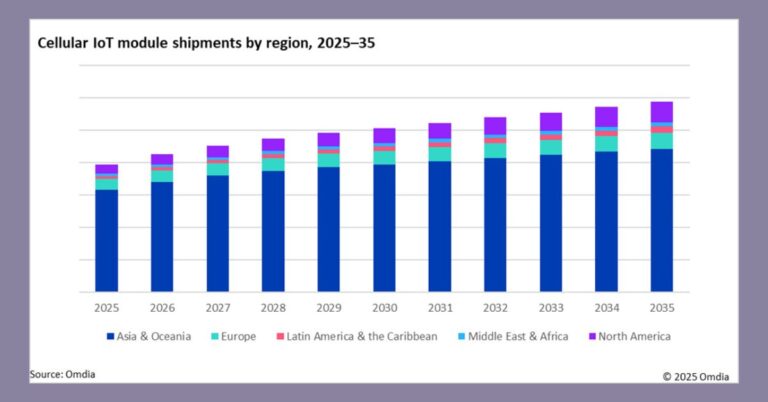The Hola 5G Oulu project has launched the first Private 5G standalone (SA) network in a functioning hospital in Europe. This milestone at Oulu University Hospital in Finland marks a transformative step in healthcare, enabling real-time connectivity, seamless data sharing, and improved patient care.
Overcoming Connectivity Challenges in Modern Hospitals
Hospitals demand uninterrupted, secure, and low-latency connectivity to handle critical data transfers and real-time medical applications. Traditional Wi-Fi and wired networks often struggle with:
- Network congestion during peak hours
- Signal interference from medical equipment
- Security vulnerabilities due to outdated network infrastructures
- Limited mobility, restricting seamless communication among healthcare professionals
The need for a robust, high-performance, and resilient connectivity solution became crucial for Oulu University Hospital to enhance patient monitoring, surgical precision, and medical workflow automation.
How Private 5G Enhances Hospital Connectivity & Security
To address these challenges, Boldyn Networks deployed a 5G SA network using Nokia Modular Private Wireless (MPW) technology. This network offers:
- Ultra-low latency: Ensuring real-time communication and monitoring
- Seamless connectivity: No signal drop even in power outages
- Advanced security: Encrypted communication for patient data protection
- High-capacity bandwidth: Supporting multiple IoT devices and medical applications simultaneously
With its private 5G deployment, Oulu University Hospital can now integrate cutting-edge wearable technologies, AI-assisted medical analysis, and real-time patient monitoring.
Real-World 5G Use Cases: Smart Wearables & AR in Hospitals
The new 5G-powered ecosystem supports several groundbreaking applications:
-
Wireless Wearable Technologies for Patient Wards
- WICOAR HealthVision: AR-enabled smart glasses that provide real-time patient vitals, improving diagnosis and treatment decisions.
-
Mobile App for Instant Communication
- WICOAR HealthAudio: Secure and real-time voice communication platform for medical staff, ensuring instant collaboration.
-
Surgical Augmented Reality Integration
- Surgeons can wear WICOAR HealthVision smart glasses to maintain continuous access to vital patient data without needing to check external screens.
Why Private 5G is the Best Choice for Smart Hospitals
Oulu University Hospital opted for Private 5G over traditional networks due to its:
- Dedicated spectrum: Ensuring uninterrupted operation even in high-traffic conditions
- Ultra-reliability: Critical in life-saving hospital environments
- Seamless mobility: Enabling staff to access patient data anywhere in the hospital
- Future-proof design: Supporting AI, robotic medicine delivery, and virtual medical assistance
5G-Powered Healthcare: Faster Diagnoses & Improved Patient Safety
The private 5G deployment at Oulu University Hospital offers:
- Faster Diagnoses: Instant access to critical patient data via smart glasses
- Improved Patient Safety: Real-time monitoring with wearable technologies
- Seamless Communication: Reliable and secure connectivity for hospital staff
- Operational Efficiency: Reduced paperwork and faster data processing
- AI-Assisted Imaging & Remote Assistance: Enabling precise medical imaging analysis and remote consultations
The Future of Smart Hospitals: AI, Robotics & 5G Connectivity
The success of Hola 5G Oulu highlights how 5G Private Networks are transforming hospitals into highly connected, AI-driven smart healthcare facilities. Future possibilities include:
- AI-assisted diagnostics for faster and more accurate medical imaging
- Robotic medicine delivery within hospitals using 5G-connected bots
- Remote surgery assistance with AR-powered smart devices
- Virtual training programs for medical students and professionals
Key Players Behind the Oulu University Hospital 5G Network
- Boldyn Networks: Designed and deployed the 5G SA network for hospital-wide connectivity.
- Nokia: Provided the Modular Private Wireless (MPW) solution, ensuring network reliability.
- WICOAR Technologies: Developed wearable AR-based solutions like HealthVision and HealthAudio, enhancing real-time communication and data visualization for medical professionals.
- Oulu University Hospital: Testing and integrating 5G-enabled healthcare solutions into real-world medical settings.
Oulu Hospital’s 5G Rollout: Key Milestones & Future Plans
- February 2025: Private 5G SA network launched at Oulu University Hospital
- Q2 2025: Wearable devices pilot testing in clinical environments
- Q3 2025: AI-powered medical imaging and robotic automation trials
- 2026 and Beyond: Expansion of 5G-enabled smart hospital technologies
Expert Insights: How 5G is Transforming Healthcare
Jani Katisko, Associate Professor at Oulu University Hospital: “The 5G network enables instant access to critical patient data, significantly improving care quality and efficiency. We see this as just the beginning of AI-assisted imaging, robotic medicine delivery, and virtual medical training.”
Petri Parviainen, Boldyn Networks: “This project is a game-changer for healthcare. Private 5G SA enables seamless, secure, and reliable communication for hospitals, enhancing patient care and operational efficiency.”
Rauno Jokelainen, WICOAR Technologies: “With smart wireless wearables, healthcare professionals can spend more time on patient care rather than administrative tasks. The impact of this technology is profound.”
The Future of Healthcare: 5G-Powered Smart Hospitals
The successful deployment of Private 5G at Oulu University Hospital is a significant leap forward in digital healthcare transformation. With AI integration, real-time monitoring, and advanced connectivity, hospitals worldwide can now move towards smart, data-driven patient care.
As 5G-enabled healthcare solutions continue to evolve, Oulu University Hospital sets a precedent for future-ready hospitals, paving the way for next-generation medical innovations.







































